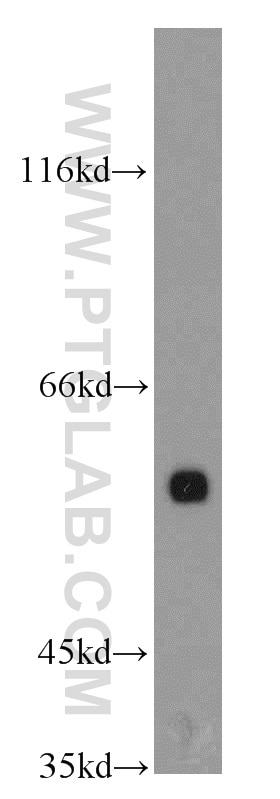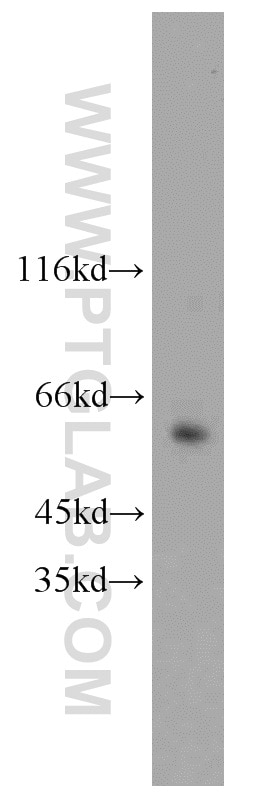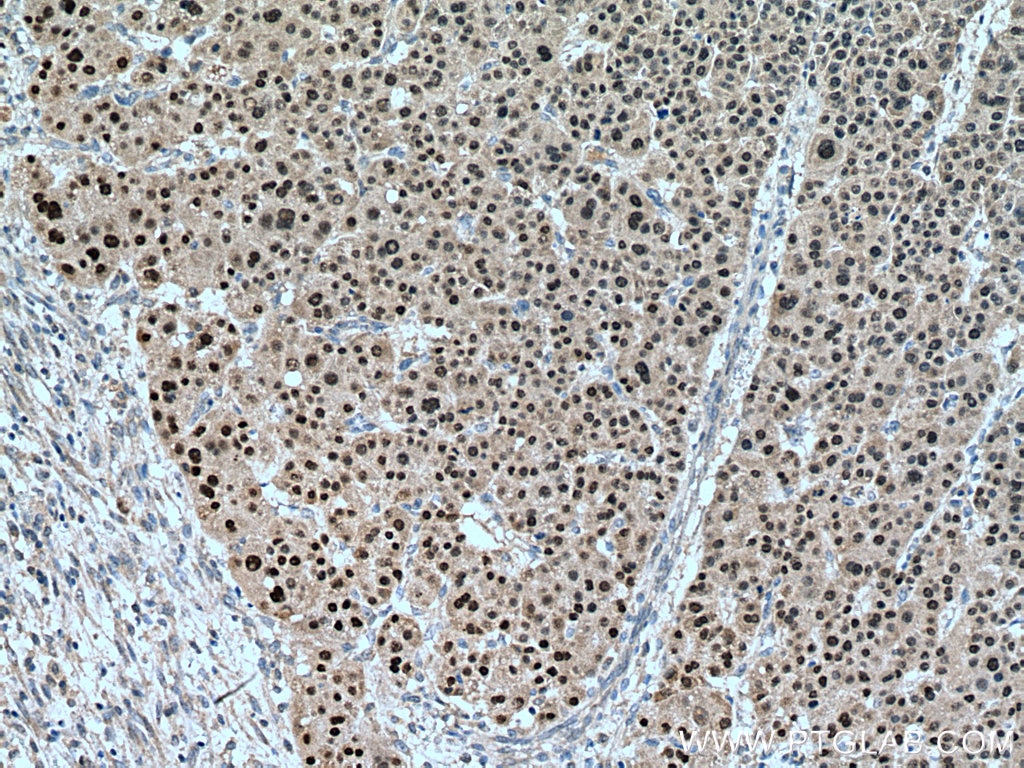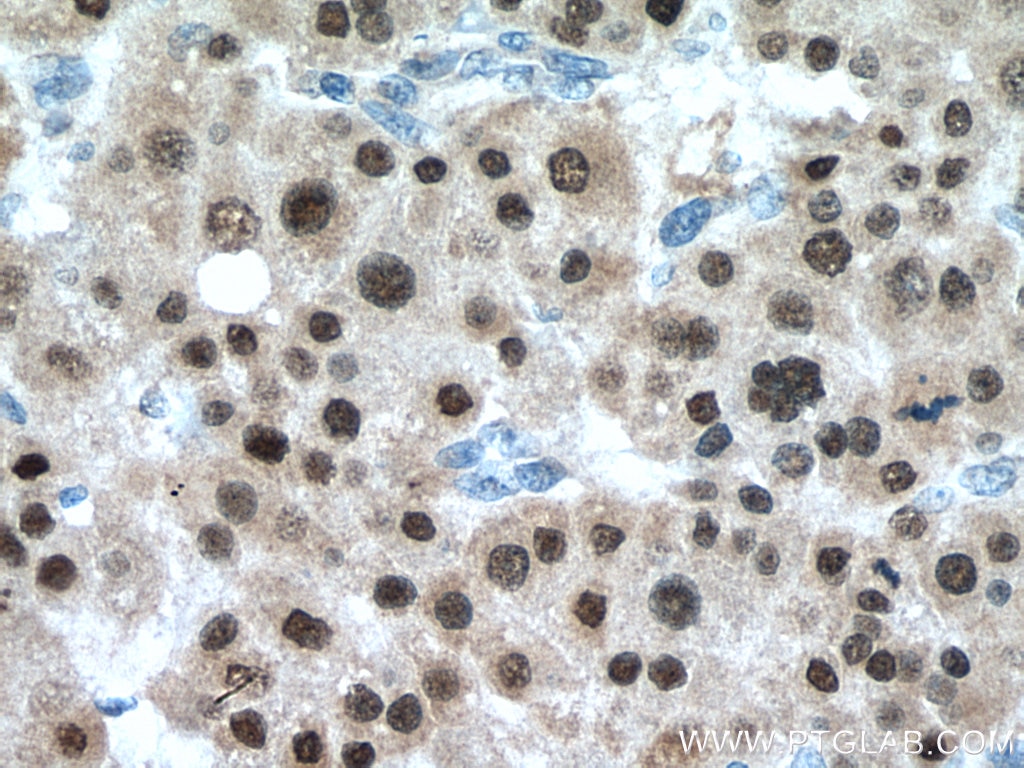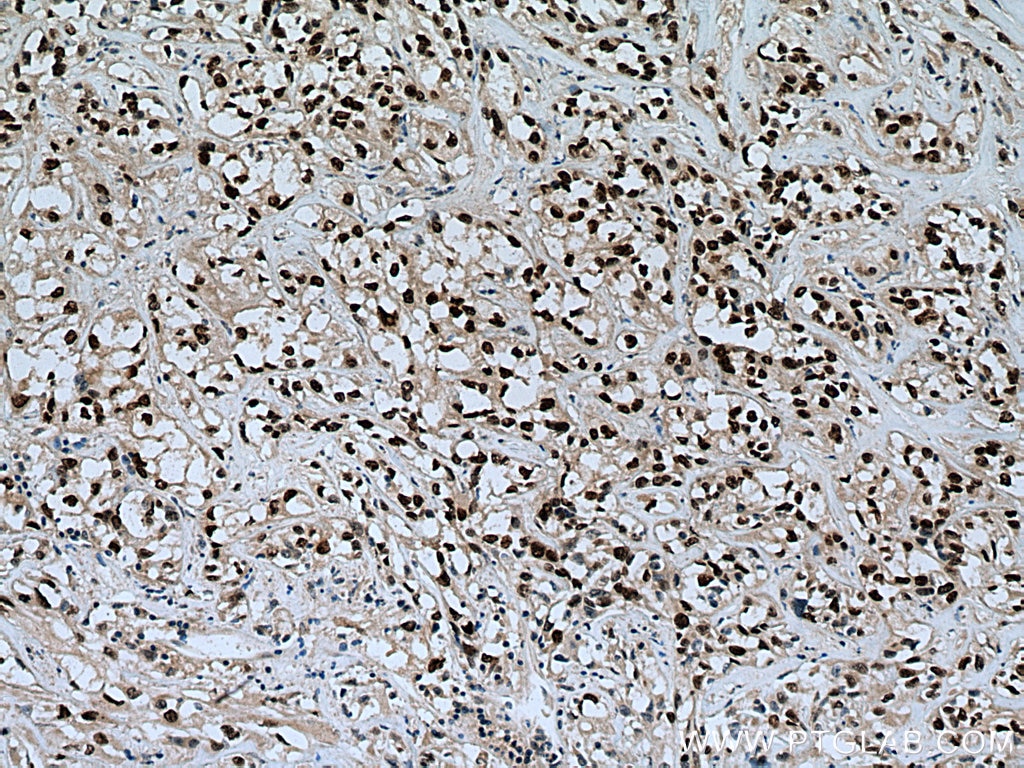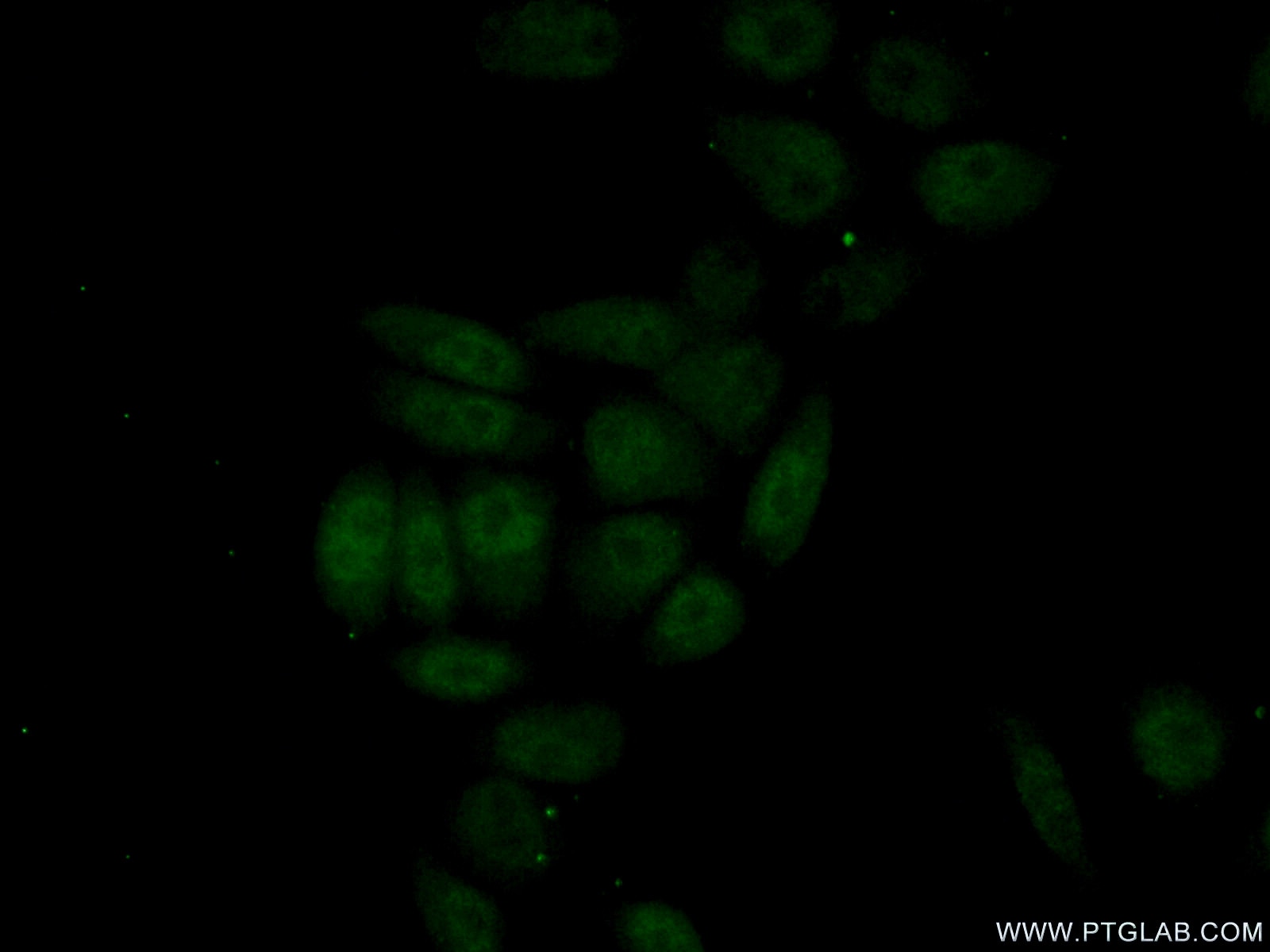- Phare
- Validé par KD/KO
Anticorps Polyclonal de lapin anti-HNF1B
HNF1B Polyclonal Antibody for WB, IHC, IF/ICC, ELISA
Hôte / Isotype
Lapin / IgG
Réactivité testée
canin, Humain, rat, souris et plus (1)
Applications
WB, IHC, IF/ICC, CoIP, ELISA
Conjugaison
Non conjugué
N° de cat : 12533-1-AP
Synonymes
Galerie de données de validation
Applications testées
| Résultats positifs en WB | cellules L02, cellules Jurkat, cellules MDCK |
| Résultats positifs en IHC | tissu de carcinome à cellules rénales humain, tissu de cancer du foie humain il est suggéré de démasquer l'antigène avec un tampon de TE buffer pH 9.0; (*) À défaut, 'le démasquage de l'antigène peut être 'effectué avec un tampon citrate pH 6,0. |
| Résultats positifs en IF/ICC | cellules L02 |
Dilution recommandée
| Application | Dilution |
|---|---|
| Western Blot (WB) | WB : 1:500-1:1000 |
| Immunohistochimie (IHC) | IHC : 1:200-1:800 |
| Immunofluorescence (IF)/ICC | IF/ICC : 1:50-1:500 |
| It is recommended that this reagent should be titrated in each testing system to obtain optimal results. | |
| Sample-dependent, check data in validation data gallery | |
Applications publiées
| KD/KO | See 3 publications below |
| WB | See 13 publications below |
| IHC | See 15 publications below |
| IF | See 4 publications below |
| FC | See 1 publications below |
| CoIP | See 1 publications below |
Informations sur le produit
12533-1-AP cible HNF1B dans les applications de WB, IHC, IF/ICC, CoIP, ELISA et montre une réactivité avec des échantillons canin, Humain, rat, souris
| Réactivité | canin, Humain, rat, souris |
| Réactivité citée | Humain, porc, souris |
| Hôte / Isotype | Lapin / IgG |
| Clonalité | Polyclonal |
| Type | Anticorps |
| Immunogène | HNF1B Protéine recombinante Ag3232 |
| Nom complet | HNF1 homeobox B |
| Masse moléculaire calculée | 557 aa, 61 kDa |
| Poids moléculaire observé | 58-65 kDa |
| Numéro d’acquisition GenBank | BC017714 |
| Symbole du gène | HNF1B |
| Identification du gène (NCBI) | 6928 |
| Conjugaison | Non conjugué |
| Forme | Liquide |
| Méthode de purification | Purification par affinité contre l'antigène |
| Tampon de stockage | PBS with 0.02% sodium azide and 50% glycerol |
| Conditions de stockage | Stocker à -20°C. Stable pendant un an après l'expédition. L'aliquotage n'est pas nécessaire pour le stockage à -20oC Les 20ul contiennent 0,1% de BSA. |
Informations générales
Hepatocyte nuclear factor-1-beta(HNF1B), or transcription factor-2(TCF2), is a member of the homeodomain-containing superfamily of transcription factors. Early expression of HNF1B(12533-1-AP) is seen in the kidney, liver, pancreas, thymus, lung, gut and genital tract. HNF1B can be a homodimer or a heterodimer with HNF1A. It's a transcription factor, probably by binding to the inverted palindrome 5'-GTTAATNATTAAC-3', and as a bookmarking factor that marks target genes for rapid transcriptional reactivation after mitosis. This is a rabbit polyclonal antibody raised against part chain of N-terminus of human HNF1B. HNF1B exists some isoforms with MV 61 kDa, 58 kDa, 46 kDa and 44 kDa.
Protocole
| Product Specific Protocols | |
|---|---|
| WB protocol for HNF1B antibody 12533-1-AP | Download protocol |
| IHC protocol for HNF1B antibody 12533-1-AP | Download protocol |
| IF protocol for HNF1B antibody 12533-1-AP | Download protocol |
| Standard Protocols | |
|---|---|
| Click here to view our Standard Protocols |
Publications
| Species | Application | Title |
|---|---|---|
Elife Human embryonic lung epithelial tips are multipotent progenitors that can be expanded in vitro as long-term self-renewing organoids. | ||
Oncogene HNF1B-mediated repression of SLUG is suppressed by EZH2 in aggressive prostate cancer.
| ||
Development Prox1 ablation in hepatic progenitors causes defective hepatocyte specification and increases biliary cell commitment. | ||
Sci Rep Complex bile duct network formation within liver decellularized extracellular matrix hydrogels. | ||
J Cell Mol Med HNF1B inhibits cell proliferation via repression of SMAD6 expression in prostate cancer. | ||
Sci Rep ATM-deficiency increases genomic instability and metastatic potential in a mouse model of pancreatic cancer. |
